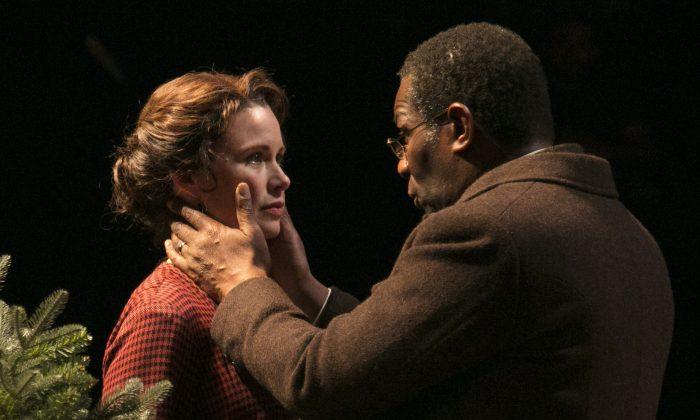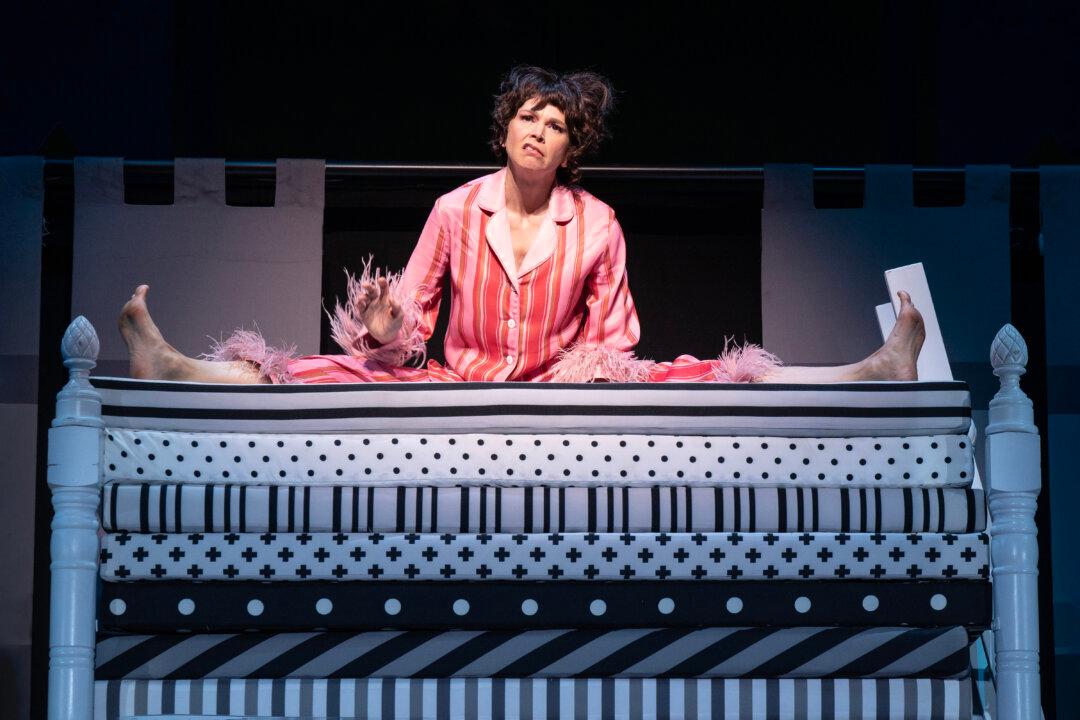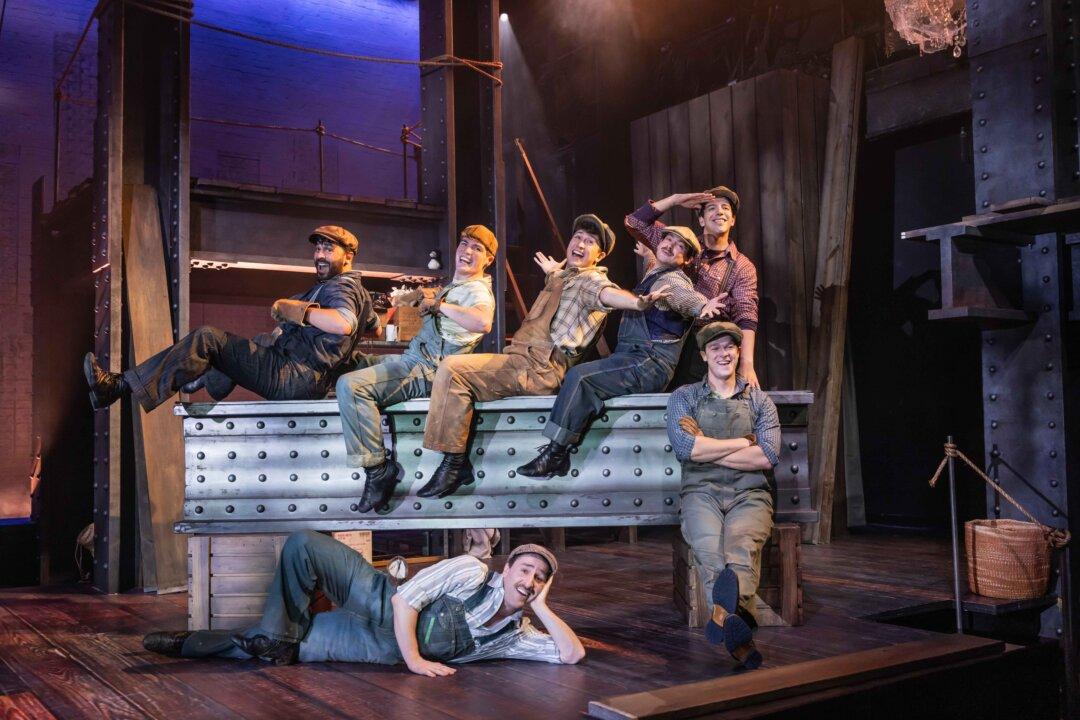NEW YORK—Henrik Ibsen’s 1879 work “A Doll’s House” and August Strindberg’s 1887 play “The Father” present two very different takes on the disintegration of marriage. Both pieces start from the premise of a lack of trust.
Theatre for a New Audience presents the two works in repertory at the Polonsky Shakespeare Center in Brooklyn to great effect. The company uses the seldom seen Thornton Wilder adaptation of “A Doll’s House” and a new version in English of “The Father” by David Greig.

In “A Doll’s House,” set in late 19th century Norway, Nora Helmer (Maggie Lacey) is the pampered wife of the hardworking and well-respected Thorwald (John Douglas Thompson), who is about to become manager of the local bank.
While he totally adores his wife and children, Thorwald is obsessed with propriety and his reputation. For this reason he is planning to dismiss Nils Krogstad (Jesse J. Perez), a bank employee with a checkered past, even though Krogstad has been making an effort to turn his life around.
Years ago, when Thorwald was seriously ill, Nora secretly borrowed money from Krogstad so she could take her husband on a trip to recuperate. She’s been paying back the sum ever since, juggling her household allowance and taking on various little jobs to make the payments.
In order for Krogstad to agree to this loan, he had Nora get her father to co-sign the agreement he drew up. Nora forged the signature as her father was dying at the time.

Now Krogstad, who has long known of Nora’s deception, is threatening to expose her secret—the ensuing scandal sure to ruin Thorwald—unless she makes sure that Krogstad keeps his job at the bank.
Thorwald refuses to cooperate, especially since he intends to hire Christina Linden (Linda Powell), an old friend of Nora’s, in Krogstad’s place.
Strindberg detested “A Doll’s House” and its pro-feminism slant, and wrote “The Father” in direct response to that play.
In “The Father,” the Captain (Thompson) is a soldier in rural Sweden in a dead-end post. Any attempt he has made to advance, either militarily or otherwise, has been stymied by his domineering wife, Laura (Lacey).

The couple is in constant battle, and Laura has the rest of the all-female household wrapped around her finger. Their current bone of contention is the future of Bertha (Kimber Monroe), their only child.
Laura’s brother (Perez) warns the Captain of the danger in trying get one’s own way when it comes to his sister.
Strindberg made his title character far more open-minded than Thorwald ever could be when it comes to the women in his life. At the same time, he makes Laura far more determined than Nora to have the upper hand in her marriage, to the point where Laura causes the Captain to question his very sanity and gets others to question it as well.
Both plays deal with couples who long ago lost the ability to find common ground. Nora has gone from being the child of her father to the child of her husband. She has never been given a chance to find out for herself who she truly is and constantly fears asserting herself in any way that will cause her husband to treat as something other than a precious doll he sees her to be.

In “The Father,” both the Captain and Laura entered into their relationship with open eyes. The Captain had been perfectly willing to be dominated by a strong-willed woman behind closed doors. Yet every time he tried to assert his independence through his career, Laura made sure to emasculate his efforts, either by direct confrontation or quiet duplicity. Their situation has deteriorated to a war for survival in which there can be only one winner.
Seeing both plays together makes it easy to understand why “A Doll’s House” is the more frequently performed work. The Ibsen play is layered in terms of subplots and character development, with the only real villain being the ignorance and restraints of society.
“The Father,” however, is played mostly on a single level: The males are helpless to defend themselves against strong-willed women—whether or not they know the women’s motives.
Thompson gives two standout performances here, playing Thorwald as self-absorbed and unsympathetic, but never truly evil. His performance as the Captain is a particular tour de force, taking him from an outwardly stern and commanding person to one tormented by passion and the continual destruction of his dreams.
In Laura and Nora, Lacey plays to perfection what is essentially both sides of the same woman. In one case, she uses her wits to help her husband even at the risk of going to jail herself and learns to respect the person she has become.
In the other situation, her character uses her intelligence and feminine wiles to destroy her husband, with absolutely no regrets.
Arin Arbus’s direction of both plays works well here, especially in terms of building the tension of who will be found ultimately in the wrong. The work of scenic designer Riccardo Hernandez is essential in showing a happy and comfortable home for the Helmers and a much more somber and stark place for the Strindberg piece.
Offering up very different commentaries in regards to the age-old battle of the sexes, both productions of “A Doll’s House” and “The Father” are very well done indeed.
Also in the casts are Christian J. Mallen, Nigel Gore, Laurie Kennedy, Ruben Almash, and Jayla Lavender Nicholas.
‘A Doll’s House’ and ‘The Father’
Theatre for a New Audience
Polonsky Shakespeare Center
262 Ashland Pl., Brooklyn
Tickets: 866-811-4111 or tfana.org
Running Times: ‘A Doll’s House’: 2 hours, 10 minutes (one intermission)
‘The Father’: 1 hour, 45 minutes (no intermission)
Closes: June 12
Judd Hollander is a member of the Drama Desk and a reviewer for stagebuzz.com and theaterscene.com





